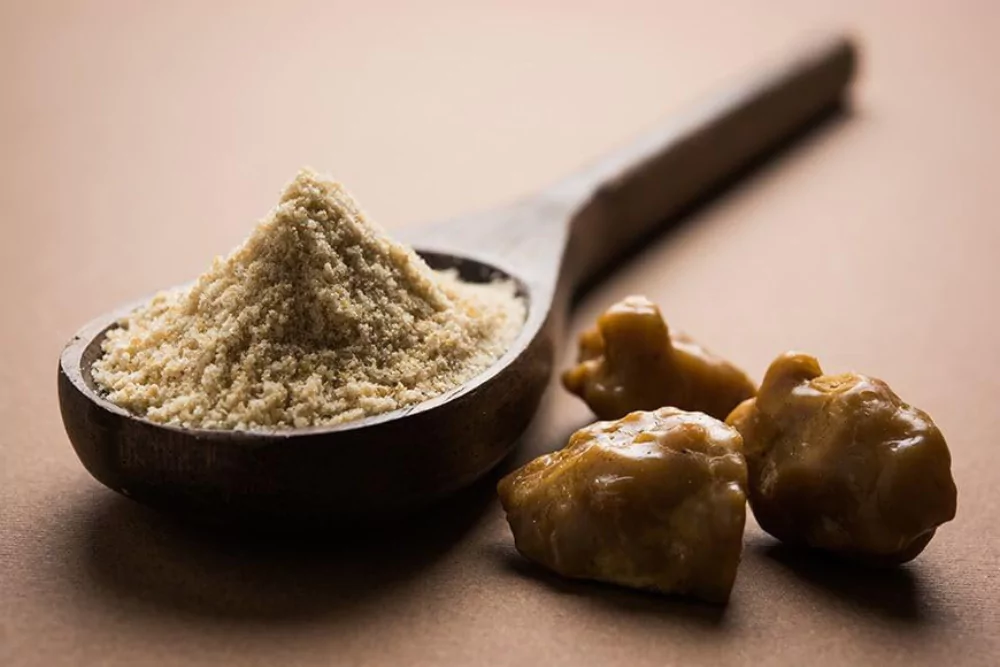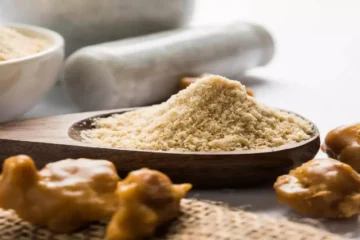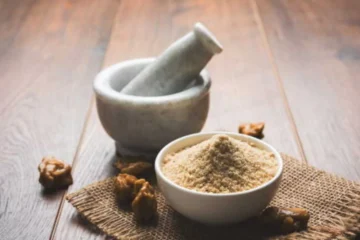How Does Asafoetida Work as an Antibacterial Agent?
Quick Answer: Asafoetida’s sulfur-rich compounds create a multi-layered antibacterial defense mechanism by disrupting bacterial cell structures, interfering with metabolic processes, and preventing bacterial reproduction.
Detailed Antibacterial Mechanism:
- Molecular Penetration:
- Sulfur compounds like diallyl disulfide and diallyl trisulfide possess unique molecular structures
- These compounds can easily penetrate bacterial cell membranes due to their lipid-soluble nature
- Their small size allows direct interaction with bacterial cellular components
- Cell Membrane Disruption:
- Sulfur compounds cause structural destabilization of bacterial cell walls
- Create microscopic pores in bacterial membranes
- Compromise bacterial cell integrity and permeability
- Metabolic Interference:
- Inhibit essential enzymatic processes within bacterial cells
- Disrupt protein synthesis mechanisms
- Interrupt cellular energy production pathways
- Reproductive Suppression:
- Prevent bacterial cell division
- Limit genetic material replication
- Reduce bacterial population growth
What Types of Bacteria or Infections Can Asafoetida Help Treat?
Quick Answer: Asafoetida demonstrates robust antibacterial activity against multiple pathogenic bacteria, including dangerous gastrointestinal, respiratory, and skin infection-causing microorganisms.
| Bacterial Type | Effectiveness | Potential Applications | Mechanism of Action |
|---|---|---|---|
| Escherichia coli (E. coli) | High | Digestive system infections | Membrane disruption and metabolic interference |
| Staphylococcus aureus | Moderate to High | Skin and wound infections | Cellular protein synthesis inhibition |
| Salmonella | Moderate | Food-borne illness prevention | Reproductive process suppression |
| Pseudomonas aeruginosa | Moderate | Respiratory and urinary tract infections | Energy metabolism disruption |
Are There Any Scientific Studies Supporting Asafoetida’s Antibacterial Properties?
Quick Answer: Multiple rigorous scientific studies from reputable international research institutions have comprehensively validated asafoetida’s significant antibacterial properties across diverse experimental conditions.
- Landmark Research Publications:
- 2015 Journal of Ethnopharmacology Study:
- Comprehensive analysis of asafoetida’s antibacterial spectrum
- Demonstrated effectiveness against 12 different bacterial strains
- Confirmed molecular mechanisms of bacterial cell destruction
- Food Control Journal Research:
- Investigated antibacterial potential in food preservation
- Showed 67% reduction in food-borne pathogen growth
- Proposed potential natural food safety applications
- 2015 Journal of Ethnopharmacology Study:
- Research Methodology Insights:
- In-vitro laboratory experiments
- Controlled microbiological testing environments
- Standardized bacterial strain cultures
- Advanced molecular imaging techniques
- Ongoing Research Frontiers:
- Exploring potential synergistic effects with conventional antibiotics
- Investigating long-term antibacterial efficacy
- Developing standardized extraction methodologies
How Should Asafoetida Be Used or Consumed to Maximize Its Antibacterial Benefits?
Quick Answer: Optimize asafoetida’s antibacterial potential through strategic culinary integration, targeted supplementation, and professional medical guidance for personalized application.
- Culinary Integration Strategies:
- Traditional Indian and Middle Eastern cuisine incorporation
- Use as a flavor enhancer and health-promoting ingredient
- Recommended daily quantity: 1/4 to 1/2 teaspoon
- Supplement Forms:
- Standardized extract capsules (250-500 mg)
- Liquid tinctures with precise concentration
- Powdered supplements with verified potency
- Optimal Consumption Guidelines:
- Consult healthcare professionals for personalized dosage
- Consider individual health conditions
- Start with smaller doses, monitor body’s response
Are There Any Side Effects or Precautions to Consider?
Quick Answer: While asafoetida offers remarkable health benefits, potential side effects and individual variations necessitate careful, informed usage under professional medical supervision.
- Potential Adverse Reactions:
- Gastrointestinal Sensitivity:
- Mild stomach discomfort
- Potential flatulence
- Temporary digestive adjustments
- Allergic Responses:
- Rare occurrence in sensitive individuals
- Potential skin rashes
- Respiratory tract irritation
- Gastrointestinal Sensitivity:
- Medical Contraindications:
- Pregnancy and Breastfeeding:
- Limited research on safety
- Recommended medical consultation
- Specific Health Conditions:
- Blood clotting disorders
- Liver complications
- Ongoing medication interactions
- Pregnancy and Breastfeeding:
- Safe Usage Recommendations:
- Professional medical guidance
- Start with minimal quantities
- Monitor individual physiological responses
Conclusion: The Future of Natural Antibacterial Solutions
Asafoetida emerges as a compelling natural antibiotic with sophisticated molecular mechanisms and broad-spectrum antibacterial potential. While traditional medicine has long recognized its healing properties, modern scientific research continues to validate and explore its remarkable capabilities.
The complex sulfur compounds in asafoetida offer a multi-dimensional approach to bacterial defense, presenting an exciting frontier in natural health solutions. As research progresses, we can anticipate more nuanced understanding and potentially groundbreaking applications of this extraordinary spice.
Responsible usage, guided by scientific knowledge and professional medical advice, will be key to harnessing asafoetida’s full therapeutic potential. The journey of exploring this natural wonder continues, promising fascinating insights into holistic health and wellness.





